Candidates who need to take the Microsoft DP-420 exam come in, and we’ve updated the Microsoft DP-420 exam dumps to provide you with the best Microsoft DP-420 learning materials for you to study.
On the Pass4itSure DP-420 exam dumps page: https://www.pass4itsure.com/dp-420.html you can use the Pass4itSure DP-420 pdf file on your smart device to learn all the DP-420 practice questions and answers when you are available. Or practice directly on VCE to improve your DP-420 exam and successfully pass the Designing and Implementing Cloud-Native Applications Using Microsoft Azure Cosmos DB exam.
What was your first impression of exam DP-420?
Exam DP-420: Designing and Implementing Cloud-Native Applications Using Microsoft Azure Cosmos DB is a new exam item added for 2021-2022. Taking the DP-420 exam program will make it easy for you to earn microsoft Certified: Azure Cosmos DB Developer Specialty certification.
DP-420 exam important:
Full Name: Designing and Implementing Cloud-Native Applications Using Microsoft Azure Cosmos DB
Abbreviation: DP-420
Passing Score: 700
Languages: English, Japanese, Chinese (Simplified), Korean, German, French, Spanish, Portuguese (Brazil), Arabic (Saudi Arabia), Russian, Chinese (Traditional), Italian, Indonesian (Indonesia)
Measuring Capability:
Design and implement data models
Design and implement data distribution
Integrate an Azure Cosmos DB solution
Optimize an Azure Cosmos DB solution
Maintain an Azure Cosmos DB solution
Learning Resources:
Get started with Azure Cosmos DB SQL API
Plan and implement Azure Cosmos DB SQL API
Connect to Azure Cosmos DB SQL API with the SDK
Access and manage data with the Azure Cosmos DB SQL API SDKs
Execute queries in Azure Cosmos DB SQL API
Define and implement an indexing strategy for Azure Cosmos DB SQL API
Implement a data modeling and partitioning strategy for Azure Cosmos DB SQL API
Design and implement a replication strategy for Azure Cosmos DB SQL API
Monitor and troubleshoot an Azure Cosmos DB SQL API solution
Create server-side programming constructs in Azure Cosmos DB SQL API
Certifications Earned: Microsoft Certified: Azure Cosmos DB Developer Specialty
Microsoft Certified: Azure Cosmos DB Developer Specialty steps:
- Take one exam >> DP-420 exam >> 2. Earn ASSOCIATE CERTIFICATION >> Microsoft Certified: Azure Cosmos DB Developer Specialty

What are the study materials for the Microsoft DP-420 exam?
The DP-420 exam dumps (DP-420 exam dumps PDF or DP-420 exam dumps VCE) provided by Pass4itSure is the best learning material for the Designing and Implementing Cloud-Native Applications Using Microsoft Azure Cosmos DB exam. You can try the free DP-420 exam dumps Q&A below below to verify the quality.
Microsoft Certified: Azure Cosmos DB Developer Specialty DP-420 free exam questions:
QUESTION # 1
DRAG DROP
You have an app that stores data in an Azure Cosmos DB Core (SQL) API account The app performs queries that return large result sets. You need to return a complete result set to the app by using pagination. Each page of results must return 80 items. Which three actions should you perform in sequence? To answer, move the appropriate actions from the list of actions to the answer area and arrange them in the correct order.
Select and Place:
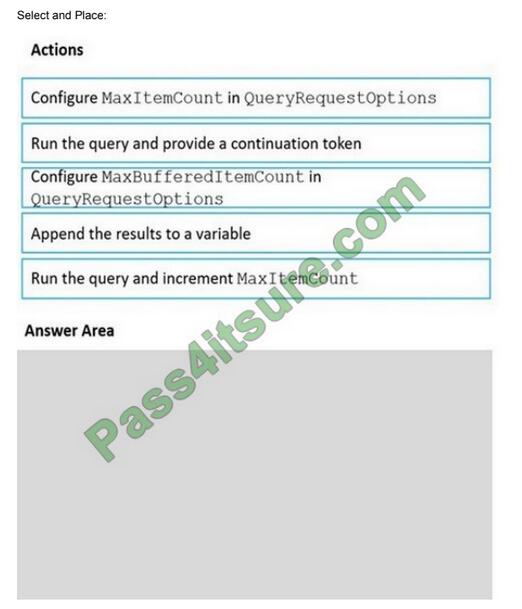
Correct Answer:
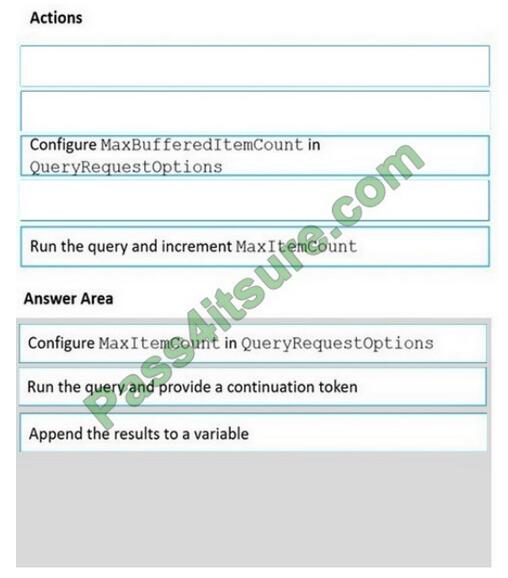
When DefaultTimeToLive is -1 then your Time to Live setting is On (No default)
Time to Live on a container, if present and the value is set to “-1”, it is equal to infinity, and items don\’t expire by default.
Time to Live on an item:
This Property is applicable only if DefaultTimeToLive is present and it is not set to null for the parent container. If present, it overrides the DefaultTimeToLive value of the parent container.
Reference:
https://docs.microsoft.com/en-us/azure/cosmos-db/sql/time-to-live
Explanation:
Step 1: Configure the MaxItemCount in QueryRequestOptions
You can specify the maximum number of items returned by a query by setting the MaxItemCount. The MaxItemCount is specified per request and tells the query engine to return that number of items or fewer.
Box 2: Run the query and provide a continuation token
In the .NET SDK and Java SDK you can optionally use continuation tokens as a bookmark for your query\’s progress.
Azure Cosmos DB query executions are stateless at the server side and can be resumed at any time using the continuation token. If the query returns a continuation token, then there are additional query results.
Step 3: Append the results to a variable
Reference:
https://docs.microsoft.com/en-us/azure/cosmos-db/sql/sql-query-pagination
QUESTION # 2
You plan to create an Azure Cosmos DB Core (SQL) API account that will use customer-managed keys stored in Azure Key Vault. You need to configure an access policy in Key Vault to allow Azure Cosmos DB access to the keys. Which three permissions should you enable in the access policy? Each correct answer presents part of the solution. NOTE: Each correct selection is worth one point.
A. Wrap Key
B. Get
C. List
D. Update
E. Sign
F. Verify
G. Unwrap Key
Correct Answer: ABG
To Configure customer-managed keys for your Azure Cosmos account with Azure Key Vault: Add an access policy to your Azure Key Vault instance:
1.From the Azure portal, go to the Azure Key Vault instance that you plan to use to host your encryption keys. Select Access Policies from the left menu:
2.Select + Add Access Policy.
3.Under the Key permissions drop-down menu, select Get, Unwrap Key, and Wrap Key permissions:
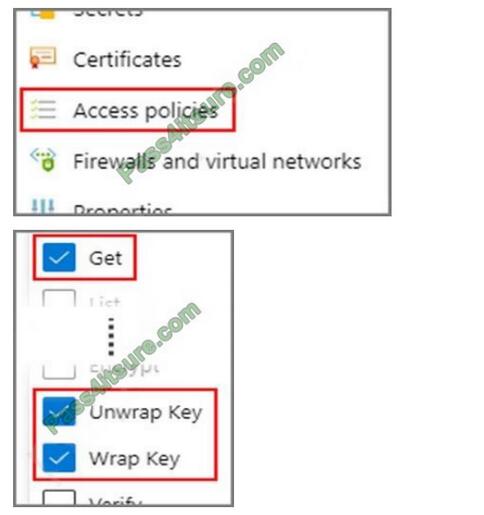
Reference: https://docs.microsoft.com/en-us/azure/cosmos-db/how-to-setup-cmk
QUESTION # 3
HOTSPOT
You have an Azure Cosmos DB Core (SQL) API account named account1. In account1, you run the following query in a container that contains 100GB of data.
SELECT *
FROM c
WHERE LOWER(c.categoryid) = “hockey”
You view the following metrics while performing the query.
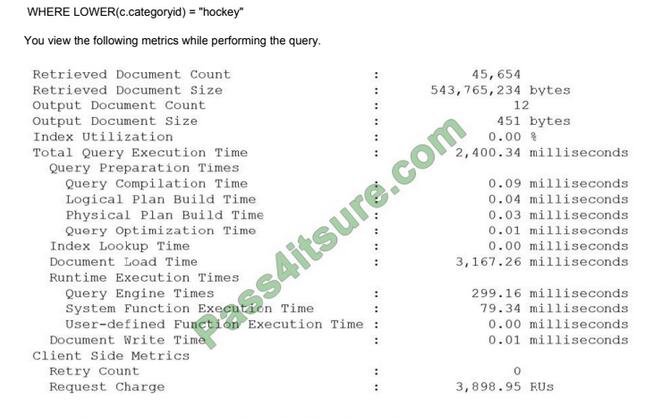
For each of the following statements, select Yes if the statement is true. Otherwise, select No.
NOTE: Each correct selection is worth one point.
Hot Area:

Correct Answer:

Box 1: No
Each physical partition should have its own index, but since no index is used, the query is not cross-partition.
Box 2: No
Index utilization is 0% and Index Look up time is also zero.
Box 3: Yes
A partition key index will be created, and the query will perform across the partitions.
Reference:
https://docs.microsoft.com/en-us/azure/cosmos-db/sql/how-to-query-container
QUESTION # 4
HOTSPOT
You have a database named telemetry in an Azure Cosmos DB Core (SQL) API account that stores IoT data. The database contains two containers named readings and devices. Documents in readings have the following structure.
1.id
2.deviceid
3.timestamp
4.ownerid
5.measures (array)
-type
-value
-metricid
Documents in devices have the following structure. id deviceid owner ownerid
-emailaddress
-name brand model
For each of the following statements, select Yes if the statement is true. Otherwise, select No.
NOTE: Each correct selection is worth one point.
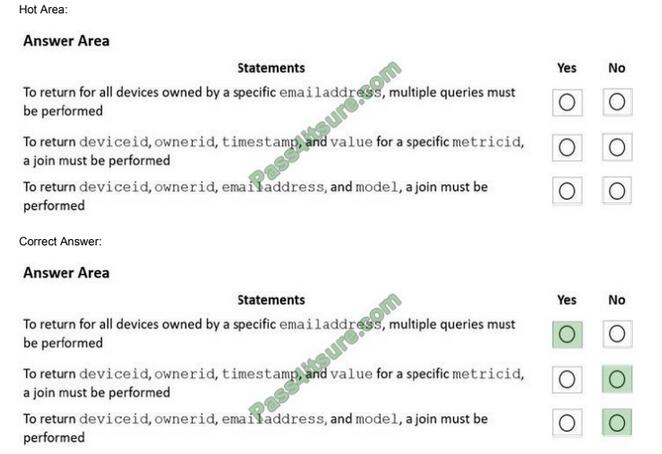
Box 1: Yes
Need to join readings and devices.
Box 2: No
Only readings is required. All required fields are in readings.
Box 3: No
Only devices is required. All required fields are in devices.
QUESTION # 5
You are troubleshooting the current issues caused by the application updates. Which action can address the application updates issue without affecting the functionality of the application?
A. Enable time to live for the con-product container.
B. Set the default consistency level of account1 to strong.
C. Set the default consistency level of account1 to bounded staleness.
D. Add a custom indexing policy to the con-product container.
Correct Answer: C
Bounded staleness is frequently chosen by globally distributed applications that expect low write latencies but require total global order guarantee. Bounded staleness is great for applications featuring group collaboration and sharing, stock ticker, publish-subscribe/queueing etc.
Scenario: Application updates in con-product frequently cause HTTP status code 429 “Too many requests”. You discover that the 429 status code relates to excessive request unit (RU) consumption during the updates.
Reference: https://docs.microsoft.com/en-us/azure/cosmos-db/consistency-levels
QUESTION # 6
You have a container named container1 in an Azure Cosmos DB Core (SQL) API account. You need to provide a user named User1 with the ability to insert items into container1 by using role-based access control (RBAC). The solution must use the principle of least privilege. Which roles should you assign to User1?
A. CosmosDB Operator only
B. DocumentDB Account Contributor and Cosmos DB Built-in Data Contributor
C. DocumentDB Account Contributor only
D. Cosmos DB Built-in Data Contributor only
Correct Answer: A
Cosmos DB Operator: Can provision Azure Cosmos accounts, databases, and containers. Cannot access any data or use Data Explorer.
Incorrect Answers:
B: DocumentDB Account Contributor can manage Azure Cosmos DB accounts. Azure Cosmos DB is formerly known as DocumentDB.
C: DocumentDB Account Contributor: Can manage Azure Cosmos DB accounts.
Reference: https://docs.microsoft.com/en-us/azure/cosmos-db/role-based-access-control
QUESTION # 7
You have an Azure Cosmos DB Core (SQL) API account that uses a custom conflict resolution policy. The account has a registered merge procedure that throws a runtime exception.
The runtime exception prevents conflicts from being resolved. You need to use an Azure function to resolve the conflicts. What should you use?
A. a function that pulls items from the conflicts feed and is triggered by a timer trigger
B. a function that receives items pushed from the change feed and is triggered by an Azure Cosmos DB trigger
C. a function that pulls items from the change feed and is triggered by a timer trigger
D. a function that receives items pushed from the conflicts feed and is triggered by an Azure Cosmos DB trigger
Correct Answer: D
The Azure Cosmos DB Trigger uses the Azure Cosmos DB Change Feed to listen for inserts and updates across partitions. The change feed publishes inserts and updates, not deletions.
Reference: https://docs.microsoft.com/en-us/azure/azure-functions/functions-bindings-cosmosdb
QUESTION # 8
After you answer a question in this section, you will NOT be able to return to it. As a result, these questions will not appear in the review screen. You have a container named container1 in an Azure Cosmos DB Core (SQL) API account. You need to make the contents of container1 available as reference data for an Azure Stream Analytics job.
Solution: You create an Azure Synapse pipeline that uses Azure Cosmos DB Core (SQL) API as the input and Azure Blob Storage as the output. Does this meet the goal?
A. Yes
B. No
Correct Answer: B
Instead create an Azure function that uses Azure Cosmos DB Core (SQL) API change feed as a trigger and Azure event hub as the output. The Azure Cosmos DB change feed is a mechanism to get a continuous and incremental feed of records from an Azure Cosmos container as those records are being created or modified.
Change feed support works by listening to container for any changes. It then outputs the sorted list of documents that were changed in the order in which they were modified.
Reference: https://docs.microsoft.com/en-us/azure/cosmos-db/sql/changefeed-ecommerce-solution
QUESTION # 9
You need to provide a solution for the Azure Functions notifications following updates to con-product. The solution must meet the business requirements and the product catalog requirements. Which two actions should you perform? Each correct answer presents part of the solution. NOTE: Each correct selection is worth one point.
A. Configure the trigger for each function to use a different leaseCollectionPrefix
B. Configure the trigger for each function to use the same leaseCollectionName
C. Configure the trigger for each function to use a different leaseCollectionName
D. Configure the trigger for each function to use the same leaseCollectionPrefix
Correct Answer: AB
leaseCollectionPrefix: when set, the value is added as a prefix to the leases created in the Lease collection for this Function. Using a prefix allows two separate Azure Functions to share the same Lease collection by using different prefixes.
Scenario: Use Azure Functions to send notifications about product updates to different recipients.
Trigger the execution of two Azure functions following every update to any document in the con-product container.
Reference:
https://docs.microsoft.com/en-us/azure/azure-functions/functions-bindings-cosmosdb-v2-trigger
QUESTION # 10
HOTSPOT
You have a container named container1 in an Azure Cosmos DB Core (SQL) API account.
The following is a sample of a document in container1.
{
“studentId”: “631282”,
“firstName”: “James”,
“lastName”: “Smith”,
“enrollmentYear”: 1990,
“isActivelyEnrolled”: true,
“address”: {
“street”: “”,
“city”: “”,
“stateProvince”: “”,
“postal”: “”,
}
}
The container1 container has the following indexing policy.
{
“indexingMode”: “consistent”,
“includePaths”: [
{
“path”: “/” }, { “path”: “/address/city/?” } ], “excludePaths”: [ { “path”: “/address/“
},
{
“path”: “/firstName/?”
}
]
}
For each of the following statements, select Yes if the statement is true. Otherwise, select No.
NOTE: Each correct selection is worth one point.
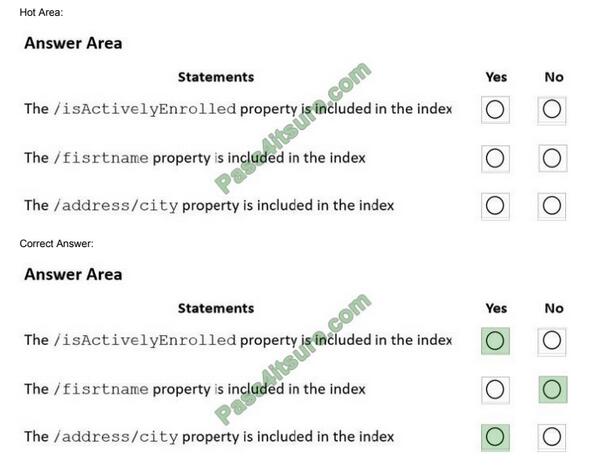
Box 1: Yes
“path”: “/*” is in includePaths.
Include the root path to selectively exclude paths that don\’t need to be indexed. This is the recommended approach as it lets Azure Cosmos DB proactively index any new property that may be added to your model.
Box 2: No
“path”: “/firstName/?” is in excludePaths.
Box 3: Yes
“path”: “/address/city/?” is in includePaths
Reference:
https://docs.microsoft.com/en-us/azure/cosmos-db/index-policy
QUESTION # 11
HOTSPOT
You configure Azure Cognitive Search to index a container in an Azure Cosmos DB Core (SQL) API account as shown in the following exhibit.

Use the drop-down menus to select the answer choice that completes each statement based on the information presented in the graphic.
NOTE: Each correct selection is worth one point.
Hot Area:

Correct Answer:
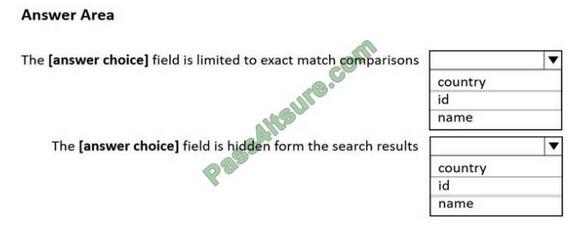
Box 1: country
The country field is filterable. Note: filterable: Indicates whether to enable the field to be referenced in $filter queries. Filterable differs from searchable in how strings are handled. Fields of type Edm.String or Collection(Edm.String) that are filterable do not undergo lexical analysis, so comparisons are for exact matches only.
Box 2: name
The name field is not Retrievable. Retrievable: Indicates whether the field can be returned in a search result. Set this attribute to false if you want to use a field (for example, margin) as a filter, sorting, or scoring mechanism but do not want the field to be visible to the end user.
Note: searchable: Indicates whether the field is full-text searchable and can be referenced in search queries.
Reference:
https://docs.microsoft.com/en-us/rest/api/searchservice/create-index
QUESTION # 12
You are designing an Azure Cosmos DB Core (SQL) API solution to store data from IoT devices. Writes from the devices will be occur every second. The following is a sample of the data.
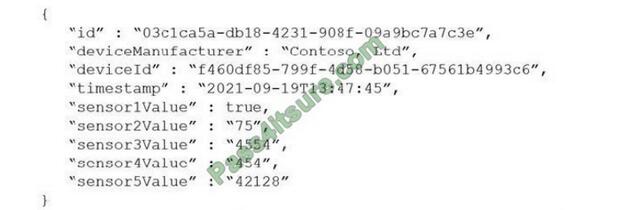
You need to select a partition key that meets the following requirements for writes:
1. Minimizes the partition skew
2. Avoids capacity limits
3. Avoids hot partitions What should you do?
A. Use timestampas the partition key.
B. Create a new synthetic key that contains deviceIdand sensor1Value.
C. Create a new synthetic key that contains deviceIdand deviceManufacturer.
D. Create a new synthetic key that contains deviceIdand a random number.
Correct Answer: D
Use a partition key with a random suffix. Distribute the workload more evenly is to append a random number at the end of the partition key value. When you distribute items in this way, you can perform parallel write operations across partitions.
Incorrect Answers:
A: You will also not like to partition the data on “DateTime”, because this will create a hot partition. Imagine you have partitioned the data on time, then for a given minute, all the calls will hit one partition. If you need to retrieve the data for a customer, then it will be a fan-out query because data may be distributed on all the partitions.
B: Senser1Value has only two values.
C: All the devices could have the same manufacturer.
Reference: https://docs.microsoft.com/en-us/azure/cosmos-db/sql/synthetic-partition-keys
QUESTION # 13
After you answer a question in this section, you will NOT be able to return to it. As a result, these questions will not appear in the review screen. You have an Azure Cosmos DB Core (SQL) API account named account 1 that uses autoscale throughput.
You need to run an Azure function when the normalized request units per second for a container in account1 exceeds a specific value. Solution: You configure the function to have an Azure CosmosDB trigger. Does this meet the goal?
A. Yes
B. No
Correct Answer: B
Instead configure an Azure Monitor alert to trigger the function.
You can set up alerts from the Azure Cosmos DB pane or the Azure Monitor service in the Azure portal.
Reference:
https://docs.microsoft.com/en-us/azure/cosmos-db/create-alerts
Free DP-420 Exam Dumps Questions 1-13 [drive]:
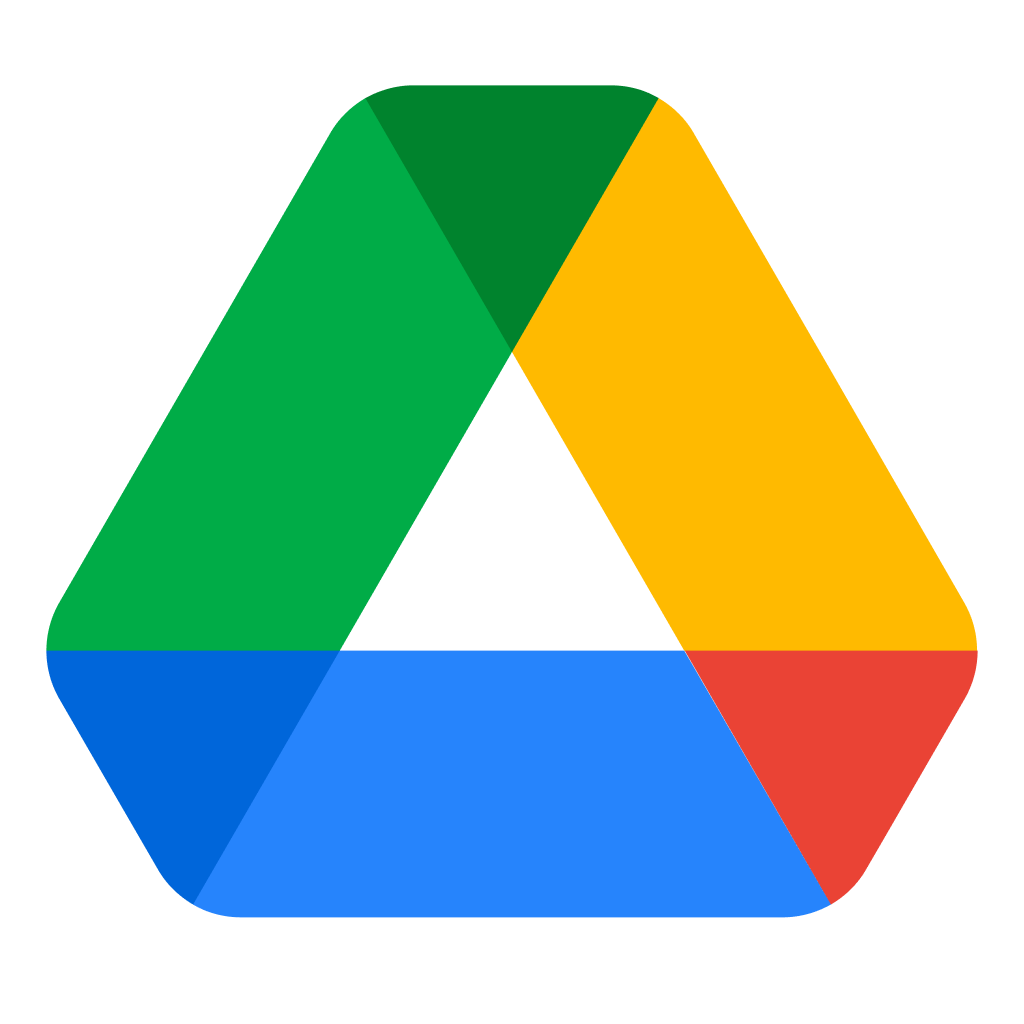
https://drive.google.com/file/d/1klJEzNg4ORm_95v1NVzl_nI9Ku7JgvjI/view?usp=sharing
If you would like to get the full exam questions, please download the Pass4itSure DP-420 exam dumps questions: https://www.pass4itsure.com/dp-420.html